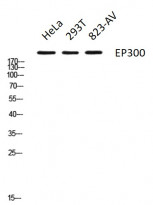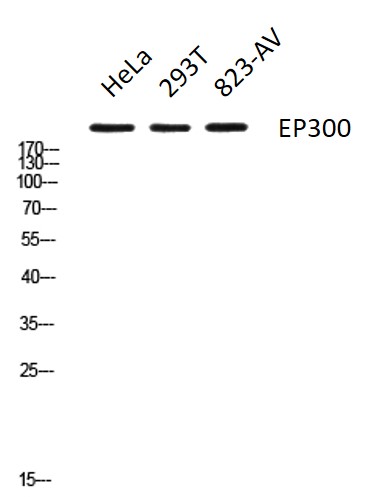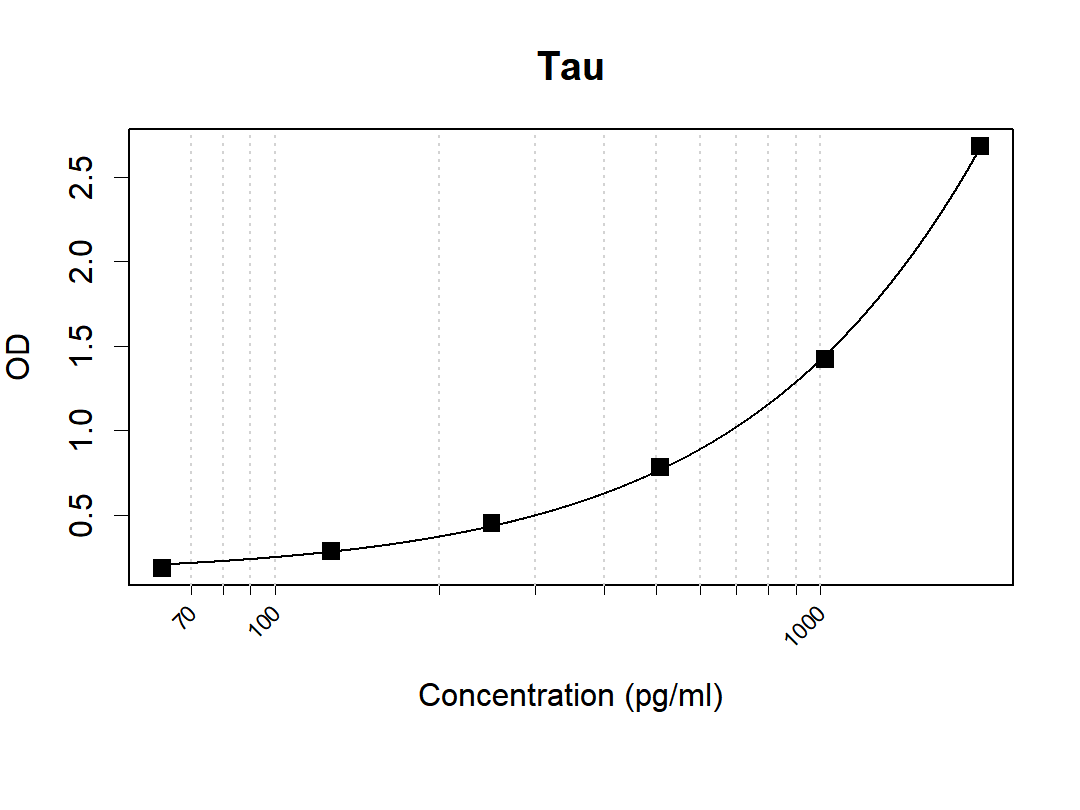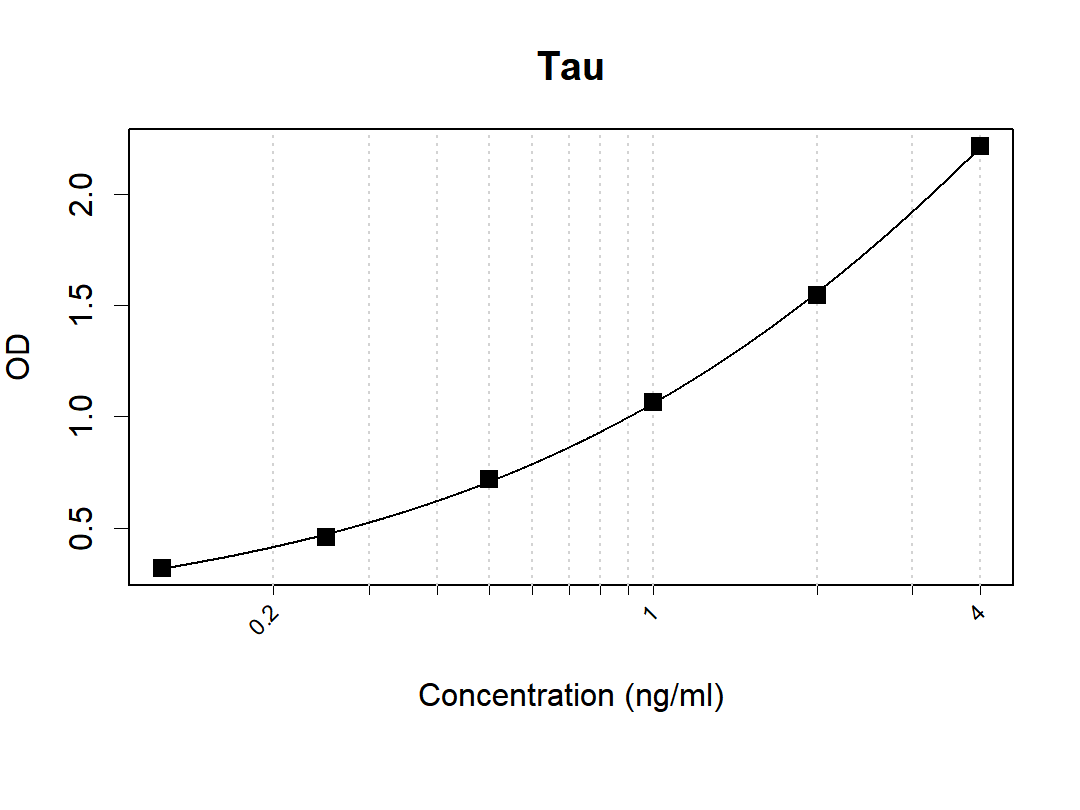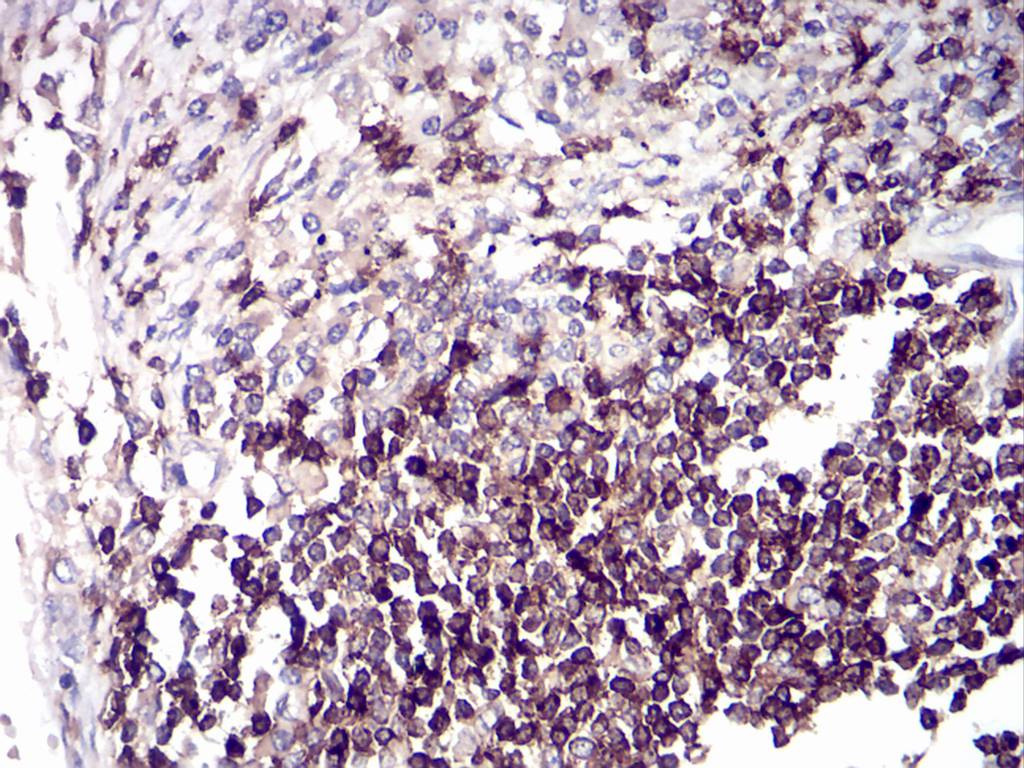anti-EP300 / KAT3B antibody
CAT.NO. : ARG66264
US$ Please choose
US$ Please choose
Size:
Trail, Bulk size or Custom requests Please contact us
*产品价格可能会有所调整,请以品牌方官网实时更新的价格为准,以确保准确性。
概述
| 产品描述 | Rabbit Polyclonal antibody recognizes EP300 / KAT3B |
|---|---|
| 反应物种 | Hu |
| 预测物种 | Ms, Rat |
| 应用 | WB |
| 特异性 | The antibody detects endogenous levels of EP300 / KAT3B protein. |
| 宿主 | Rabbit |
| 克隆 | Polyclonal |
| 同位型 | IgG |
| 靶点名称 | EP300 / KAT3B |
| 抗原物种 | Human |
| 抗原 | Synthetic peptide around the internal region of Human EP300 / KAT3B. |
| 偶联标记 | Un-conjugated |
| 別名 | EC 2.3.1.48; E1A-associated protein p300; KAT3B; p300 HAT; Histone acetyltransferase p300; RSTS2; p300 |
应用说明
| 应用建议 |
| ||||
|---|---|---|---|---|---|
| 应用说明 | * The dilutions indicate recommended starting dilutions and the optimal dilutions or concentrations should be determined by the scientist. | ||||
| 实际分子量 | 300 kDa |
属性
| 形式 | Liquid |
|---|---|
| 纯化 | Affinity purification with immunogen. |
| 缓冲液 | PBS, 0.02% Sodium azide, 50% Glycerol and 0.5% BSA. |
| 抗菌剂 | 0.02% Sodium azide |
| 稳定剂 | 50% Glycerol and 0.5% BSA |
| 浓度 | 1 mg/ml |
| 存放说明 | For continuous use, store undiluted antibody at 2-8°C for up to a week. For long-term storage, aliquot and store at -20°C. Storage in frost free freezers is not recommended. Avoid repeated freeze/thaw cycles. Suggest spin the vial prior to opening. The antibody solution should be gently mixed before use. |
| 注意事项 | For laboratory research only, not for drug, diagnostic or other use. |
生物信息
| 数据库连接 | |
|---|---|
| 基因名称 | EP300 |
| 全名 | E1A binding protein p300 |
| 背景介绍 | This gene encodes the adenovirus E1A-associated cellular p300 transcriptional co-activator protein. It functions as histone acetyltransferase that regulates transcription via chromatin remodeling and is important in the processes of cell proliferation and differentiation. It mediates cAMP-gene regulation by binding specifically to phosphorylated CREB protein. This gene has also been identified as a co-activator of HIF1A (hypoxia-inducible factor 1 alpha), and thus plays a role in the stimulation of hypoxia-induced genes such as VEGF. Defects in this gene are a cause of Rubinstein-Taybi syndrome and may also play a role in epithelial cancer. [provided by RefSeq, Jul 2008] |
| 生物功能 | Functions as histone acetyltransferase and regulates transcription via chromatin remodeling. Acetylates all four core histones in nucleosomes. Histone acetylation gives an epigenetic tag for transcriptional activation. Mediates cAMP-gene regulation by binding specifically to phosphorylated CREB protein. Mediates acetylation of histone H3 at 'Lys-122' (H3K122ac), a modification that localizes at the surface of the histone octamer and stimulates transcription, possibly by promoting nucleosome instability. Mediates acetylation of histone H3 at 'Lys-27' (H3K27ac). Also functions as acetyltransferase for nonhistone targets. Acetylates 'Lys-131' of ALX1 and acts as its coactivator. Acetylates SIRT2 and is proposed to indirectly increase the transcriptional activity of TP53 through acetylation and subsequent attenuation of SIRT2 deacetylase function. Acetylates HDAC1 leading to its inactivation and modulation of transcription. Acts as a TFAP2A-mediated transcriptional coactivator in presence of CITED2. Plays a role as a coactivator of NEUROD1-dependent transcription of the secretin and p21 genes and controls terminal differentiation of cells in the intestinal epithelium. Promotes cardiac myocyte enlargement. Can also mediate transcriptional repression. Binds to and may be involved in the transforming capacity of the adenovirus E1A protein. In case of HIV-1 infection, it is recruited by the viral protein Tat. Regulates Tat's transactivating activity and may help inducing chromatin remodeling of proviral genes. Acetylates FOXO1 and enhances its transcriptional activity. Acetylates BCL6 wich disrupts its ability to recruit histone deacetylases and hinders its transcriptional repressor activity. Participates in CLOCK or NPAS2-regulated rhythmic gene transcription; exhibits a circadian association with CLOCK or NPAS2, correlating with increase in PER1/2 mRNA and histone H3 acetylation on the PER1/2 promoter. Acetylates MTA1 at 'Lys-626' which is essential for its transcriptional coactivator activity. Acetylates XBP1 isoform 2; acetylation increases protein stability of XBP1 isoform 2 and enhances its transcriptional activity. Acetylates PCNA; acetylation promotes removal of chromatin-bound PCNA and its degradation during nucleotide excision repair (NER). Acetylates MEF2D. [UniProt] |
| 预测分子量 | 264 kDa |
| 翻译后修饰 | Acetylated on Lys at up to 17 positions by intermolecular autocatalysis. Deacetylated in the transcriptional repression domain (CRD1) by SIRT1, preferentially at Lys-1020. Deacetylated by SIRT2, preferentially at Lys-418, Lys-423, Lys-1542, Lys-1546, Lys-1549, Lys-1699, Lys-1704 and Lys-1707. Citrullinated at Arg-2142 by PADI4, which impairs methylation by CARM1 and promotes interaction with NCOA2/GRIP1. Methylated at Arg-580 and Arg-604 in the KIX domain by CARM1, which blocks association with CREB, inhibits CREB signaling and activates apoptotic response. Also methylated at Arg-2142 by CARM1, which impairs interaction with NCOA2/GRIP1. Sumoylated; sumoylation in the transcriptional repression domain (CRD1) mediates transcriptional repression. Desumoylated by SENP3 through the removal of SUMO2 and SUMO3. Probable target of ubiquitination by FBXO3, leading to rapid proteasome-dependent degradation. Phosphorylated by HIPK2 in a RUNX1-dependent manner. This phosphorylation that activates EP300 happens when RUNX1 is associated with DNA and CBFB. Phosphorylated by ROCK2 and this enhances its activity. Phosphorylation at Ser-89 by AMPK reduces interaction with nuclear receptors, such as PPARG. [UniProt] |
 New Products
New Products




